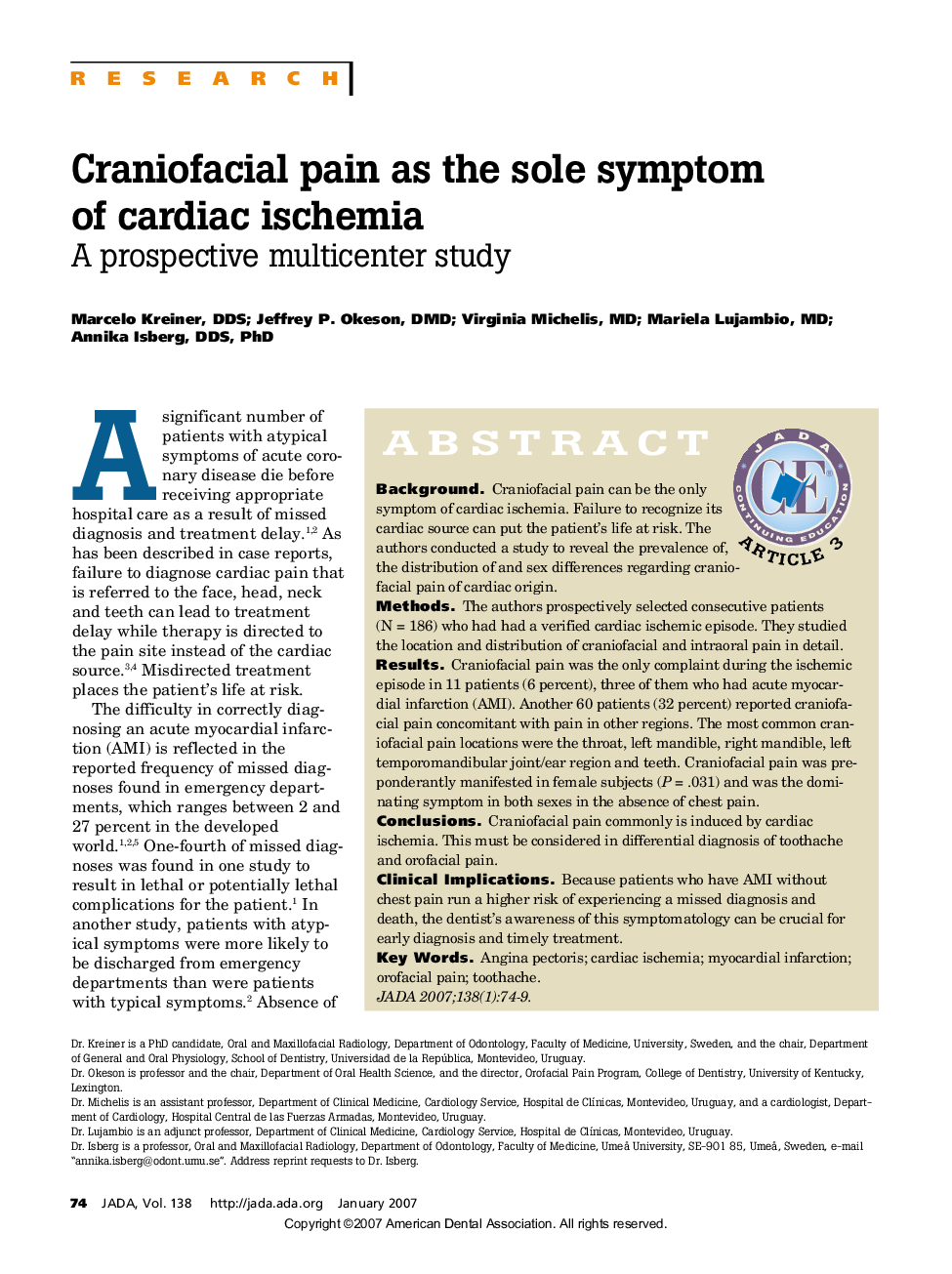| Article ID | Journal | Published Year | Pages | File Type |
|---|---|---|---|---|
| 3140575 | The Journal of the American Dental Association | 2007 | 6 Pages |
ABSTRACT BackgroundCraniofacial pain can be the only symptom of cardiac ischemia. Failure to recognize its cardiac source can put the patient's life at risk. The authors conducted a study to reveal the prevalence of, the distribution of and sex differences regarding craniofacial pain of cardiac origin.MethodsThe authors prospectively selected consecutive patients (N = 186) who had had a verified cardiac ischemic episode. They studied the location and distribution of craniofacial and intraoral pain in detail.ResultsCraniofacial pain was the only complaint during the ischemic episode in 11 patients (6 percent), three of them who had acute myocardial infarction (AMI). Another 60 patients (32 percent) reported craniofacial pain concomitant with pain in other regions. The most common craniofacial pain locations were the throat, left mandible, right mandible, left temporomandibular joint/ear region and teeth. Craniofacial pain was pre-ponderantly manifested in female subjects (P = .031) and was the dominating symptom in both sexes in the absence of chest pain.ConclusionsCraniofacial pain commonly is induced by cardiac ischemia. This must be considered in differential diagnosis of toothache and orofacial pain.Clinical ImplicationsBecause patients who have AMI without chest pain run a higher risk of experiencing a missed diagnosis and death, the dentist's awareness of this symptomatology can be crucial for early diagnosis and timely treatment.
